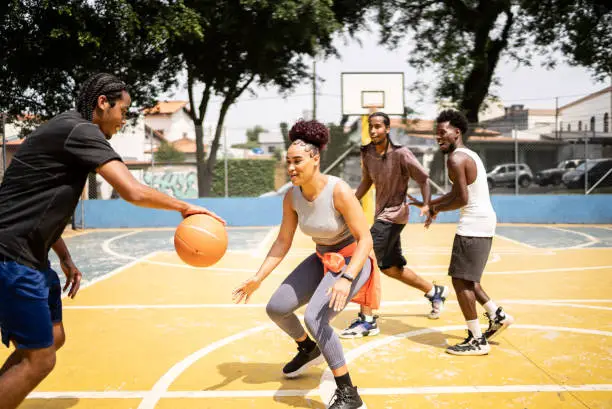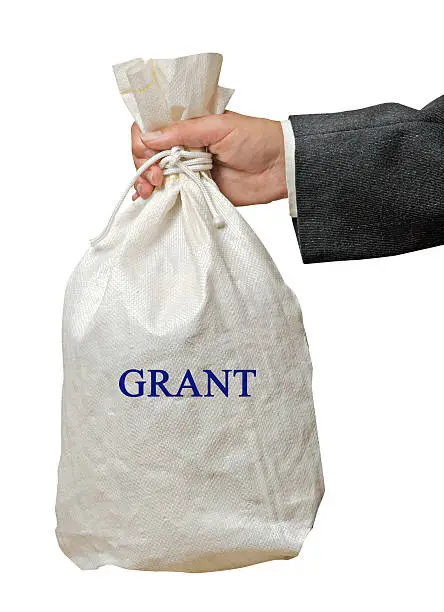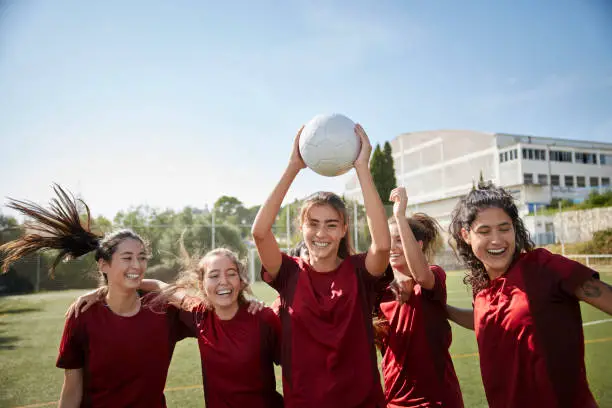Basketball Grants are a powerful tool to help fuel the dreams of athletes, coaches, and entire communities by providing essential funding for basketball programs, facilities, and scholarships.
Whether you’re a high school team looking to upgrade your equipment, a collegiate program aiming to secure additional funding, or an individual seeking a scholarship to pursue your passion for basketball, understanding how to access and effectively use these grants is key to achieving long-term success.
Common types of basketball grants include:
- Youth Basketball Grants: Aimed at local and community-based programs, these help introduce children and teenagers to the sport.
- Collegiate Basketball Grants: Offered by universities, sports associations, or private foundations, they support college teams and individual athletes.
- Facility Grants: Targeted funding for building or renovating basketball courts and related infrastructure.
- Coaching and Training Grants: Provide resources for enhancing the skills of coaches and players.
- Equipment Grants: Offer funds to purchase necessary basketball gear and training tools.
Each type of grant has its own eligibility criteria, application process, and deadlines. By tailoring your approach to the right kind of grant, you can secure the funding that best meets your specific needs.
Why Basketball Grants Matter
a) Empowering Athletes and Teams
Funding is the lifeblood of any successful sports program. For basketball teams, especially at the youth and collegiate levels, accessing grants can be a game-changer. With adequate funding,
teams can:- Upgrade outdated equipment
- Improve training facilities
- Offer enhanced coaching programs
- Provide scholarships that help talented athletes pursue higher education while competing at a high level
In fact, research has shown that well-funded sports programs often experience improvements in player performance, increased participation rates, and a more robust community support system.
For example, the NCAA’s Accelerating Academic Success Program (AASP) awarded over $1.5 million in grants to Division I schools for academic and athletic support initiatives. Although AASP targets academic success, it underscores the transformative impact of strategic grant funding.
b) Building Community and Promoting Equity
Basketball grants also play a crucial role in leveling the playing field. They provide opportunities for under-resourced communities to access quality basketball programs. By investing in community-based sports initiatives, grants help foster social inclusion, promote healthy lifestyles, and build community pride.
Moreover, these grants can serve as a catalyst for broader social change. When local organizations secure grant funding to enhance their sports facilities or programs, they not only boost team performance but also create safe spaces where young athletes can thrive both physically and mentally.
c) Economic and Developmental Impact
The benefits of basketball grants extend beyond the court. Enhanced funding often leads to improved infrastructure, which in turn can spur local economic growth. New or renovated sports facilities can attract community events, tournaments, and sponsorships, further increasing the visibility and viability of local programs.
Types of Basketball Grants
Understanding the different types of basketball grants available is the first step toward identifying the right funding opportunity for your needs. Let’s take a closer look at the primary categories:
1. Youth Basketball Grants
These grants are designed to support grassroots basketball programs and community leagues. They often target:
- Local schools and community centers
- Nonprofit organizations focused on youth sports
- Programs in low-income areas that need extra funding for equipment, uniforms, and facility upgrades
For instance, organizations like All Kids Play provide youth sports grants to help families and community programs ensure every child has a chance to participate.
2. Collegiate Basketball Grants
At the collegiate level, basketball grants can come from:
- University athletic departments
- NCAA programs and scholarships
- Private foundations dedicated to supporting student-athletes
These grants might be used to offer scholarships to promising basketball players or to improve the overall quality of college basketball programs.
3. Facility Grants
Facility grants are crucial for teams looking to build or upgrade their basketball courts, gymnasiums, or training centers. These grants can cover:
- Construction or renovation costs
- Purchase of modern equipment
- Improvements in safety and accessibility
Such grants ensure that athletes have access to top-notch facilities that can enhance training and performance.
4. Coaching and Training Grants
Quality coaching is a cornerstone of any successful basketball program. Coaching and training grants provide resources for:
- Professional development for coaches
- Advanced training programs for athletes
- Workshops and certification courses that keep staff updated on the latest strategies and techniques
Investing in coaching excellence through these grants can lead to long-term success on and off the court.
5. Equipment Grants
From basketballs to state-of-the-art training devices, equipment grants help teams and programs acquire the tools they need. These grants cover:
- Purchase of essential gear
- Replacement of worn-out equipment
- Acquisition of technology that enhances training (such as video analysis systems)
How to Find Basketball Grants
Finding the right grant requires a combination of research, planning, and the effective use of tools. Here are some tips and strategies to help you get started:
a) Use Online Grant Databases
There are numerous online platforms where you can search for basketball grants:
- Grants.gov: A comprehensive resource for federal grants.
- Foundation Center: Offers insights into private and corporate grant opportunities.
- Local government websites and community foundations often list grants available in your area.
b) Leverage Search Engines and Keywords
When searching online, use specific keywords like “basketball grant application”, “funding for basketball programs”, or “basketball scholarship grant”.
Tools such as the one on Clicks.so can help you identify high-volume keywords that are commonly used by people looking for basketball grants. Highlighting these terms in your grant application can also improve your SEO if you’re running a related website.
c) Network and Engage with Local Organizations
Often, the best grant opportunities come through local connections. Reach out to:
- School districts and local sports councils
- Nonprofit organizations dedicated to youth sports
- Community centers that organize basketball leagues
Networking can provide insider knowledge about upcoming grant cycles and unique funding opportunities not widely advertised online.
d) Consult with Grant Writing Experts
If you’re new to the world of grant applications, consider seeking expert advice, for instance Grant Writing Academy offer Grant Writing Services for organizations.
The Basketball Grant Application Process
Now that you know where to look for basketball grants, it’s time to focus on the application process. While the specifics can vary depending on the grant provider, most applications follow a similar structure. Here’s a step-by-step guide:
1. Define Your Project and Objectives
Before you start writing your grant proposal, clearly outline what you need the funding for. Consider:
- What specific aspects of your basketball program need funding? (e.g., facility upgrades, new equipment, training programs)
- What outcomes do you hope to achieve? (e.g., increased participation, improved performance, enhanced safety)
- How will the grant help your team or program succeed?
Being clear about your goals is critical to crafting a compelling application.
2. Gather Necessary Documentation
Most grant applications require supporting documents such as:
- A detailed budget
- Proof of nonprofit status (if applicable)
- Financial records or project proposals
- Letters of support from community partners or stakeholders
Having these documents organized in advance will streamline the application process.
3. Write a Compelling Proposal
Your grant proposal should tell a story. Use clear, concise language to explain:
- The need for funding
- The impact the grant will have on your program
- How the funding will be used effectively and efficiently
Include data and statistics wherever possible. For example, you might note that a recent study found that programs with access to proper funding experienced up to a 30% increase in participation and improved academic outcomes.
4. Use Templates and Checklists
A well-organized proposal is more likely to capture the attention of grant reviewers. Utilize templates and tools available from resources like the Grant Writing Academy to structure your application. These templates often include sections for:
- Project description
- Budget details
- Timelines and milestones
- Evaluation methods
5. Review and Edit Your Application
Before submission, carefully review your application for clarity, completeness, and accuracy. Ask a colleague or mentor to proofread your proposal to ensure it is free of errors and effectively communicates your needs.
6. Submit Your Application on Time
Pay close attention to deadlines. Late submissions are rarely accepted, regardless of the quality of your proposal. Keep a calendar of grant deadlines and set reminders well in advance.
Tips and Strategies for a Successful Grant Application
Writing a winning grant proposal requires more than just a clear description of your project. Here are some expert tips and strategies to boost your chances:
1. Be Clear and Concise
Avoid jargon and overly technical language. Your proposal should be accessible to all reviewers, regardless of their expertise in basketball or sports management. Use simple, direct language that clearly outlines your needs and the expected impact of the grant.
2. Tell a Compelling Story
People connect with stories. Share real-life examples or success stories that illustrate the transformative power of funding. For instance, describe how a previous grant helped a local team renovate their court, leading to increased community engagement and improved player performance.
3. Highlight the Impact
Emphasize the measurable outcomes of your project. Include specific data and statistics that demonstrate how the grant will lead to improved performance, higher participation rates, or better academic outcomes for athletes. Use bullet points or tables to present this information clearly.
4. Follow the Guidelines
Each grant application comes with its own set of guidelines. Make sure to read these carefully and adhere to them. Whether it’s a word limit, required sections, or formatting instructions, following the rules shows that you’re professional and detail-oriented.
5. Use Strong Visuals
If possible, include charts, graphs, or images that help illustrate your project’s needs and expected outcomes. Visuals can make your proposal more engaging and easier to understand. For example, a graph showing a projected increase in team participation after facility improvements can be very persuasive.
6. Seek Feedback
Before finalizing your application, get feedback from peers, mentors, or professionals who have experience in grant writing. Their insights can help you refine your proposal and avoid common pitfalls.
7. Leverage Expert Resources
For even more tips, strategies, templates, and tools to enhance your grant writing success, subscribe to the Grant Writing Academy Newsletter. Our newsletter is packed with expert advice, step-by-step guides, and valuable resources designed to help you secure the funding you need.
Subscribe to our Grant Writing Academy Newsletter now!
Real-Life Success Stories
Learning from others who have successfully navigated the grant application process can be incredibly inspiring. Here are a few examples:
Case Study 1: A High School Basketball Program
A struggling high school basketball program in a low-income district was able to secure a grant of $10,000. This funding was used to purchase new uniforms, upgrade the basketball court, and provide additional training for coaches. As a result, the team’s performance improved dramatically, and participation increased by over 25% in the following season.
Case Study 2: A Collegiate Scholarship Initiative
A small college with a promising basketball team applied for a collegiate grant to offer additional scholarships for incoming athletes. With the extra funding, the school was able to attract top talent from underrepresented communities, leading to a significant boost in team performance and a more diverse roster. This success not only enhanced the team’s competitive edge but also fostered greater community support.
Case Study 3: Renovation of a Community Sports Facility
A nonprofit organization dedicated to youth sports secured a grant to renovate a rundown community basketball court. The project included installing new flooring, updating lighting, and adding seating for spectators. Post-renovation, the facility became a hub for community events and youth basketball leagues, with participation rates soaring by nearly 30%.
These stories demonstrate that with the right funding, a well-crafted grant application, and a bit of perseverance, significant improvements can be achieved in basketball programs at all levels.
Common Challenges and How to Overcome Them
Even the best-prepared applicants can face obstacles when applying for basketball grants. Here are some common challenges and practical ways to address them:
1. Highly Competitive Funding Landscape
Many grant programs are highly competitive. To stand out, ensure your application is not only complete and accurate but also compelling. Focus on how your project will create measurable impact and use real-life data to back up your claims.
2. Complex Application Processes
Grant applications can be lengthy and detailed. Break down the process into manageable steps, use templates to stay organized, and set internal deadlines to avoid last-minute rushes.
3. Meeting Eligibility Criteria
Each grant has specific eligibility requirements. Research thoroughly to ensure that you meet these criteria before applying. If there’s any uncertainty, contact the grant provider for clarification.
4. Writing a Persuasive Proposal
Crafting a proposal that resonates with reviewers can be challenging. Keep your writing clear and concise, focus on outcomes, and highlight your project’s uniqueness. Don’t hesitate to seek professional templates and guidance from experts.
5. Budgeting Accurately
A detailed and realistic budget is crucial. Include all potential expenses and be prepared to justify each cost. Overestimating or underestimating costs can hurt your credibility and affect your chances of success.
By anticipating these challenges and preparing accordingly, you can significantly increase your odds of securing the grant funding you need.
Essential Resources and Tools for Grant Writing
Success in securing basketball grants often comes down to having the right tools at your disposal. Here are some valuable resources:
- Grant Databases: Websites like Grants.gov and Foundation Center provide comprehensive listings of grant opportunities.
- Grant Writing Workshops: Many local organizations and universities offer workshops on effective grant writing.
- Templates and Checklists: Use pre-designed templates to structure your proposal. These can save time and ensure you don’t miss any critical elements.
- Financial Planning Tools: Software such as Excel or specialized budgeting tools can help you create detailed and accurate budgets.
- Online Communities: Join forums or social media groups focused on grant writing to share experiences and get advice.
For more in-depth guidance, our Grant Writing Academy offers a range of templates, tools, and strategies specifically designed for securing grant funding.
Subscribe to our Grant Writing Academy Newsletter to get access to these exclusive resources and elevate your grant writing game!
Frequently Asked Questions
Q1: Who is eligible to apply for basketball grants?
Eligibility varies by grant program. Generally, basketball grants are available to:
- Youth sports organizations and community centers
- High school and collegiate basketball programs
- Nonprofit organizations supporting basketball initiatives
- Individual athletes seeking scholarships
Always review the specific eligibility criteria of each grant to ensure you qualify.
Q2: How can I improve my chances of securing a grant?
Here are a few tips:
- Clearly define your project and expected outcomes.
- Provide accurate and detailed budgets.
- Use templates to ensure a structured and professional application.
- Include measurable data and real-life examples to back up your proposal.
- Adhere strictly to the grant guidelines and deadlines.
Q3: Where can I find more resources on grant writing?
There are many free and paid resources available online. We highly recommend subscribing to the Grant Writing Academy Newsletter for regular tips, strategies, templates, and tools that can help you secure your next grant.
Subscribe now.
Conclusion: The Impact of Basketball Grants
Basketball grants are more than just a source of funding; they are a lifeline that empowers athletes, transforms local communities, and elevates sports programs at every level. By securing these grants, teams and organizations can enhance training facilities, provide life-changing scholarships, and create opportunities that might otherwise be out of reach.
The journey to securing a grant may seem challenging at first, but with the right tips, strategies, and tools, you can greatly improve your chances of success. Whether you’re writing a proposal to renovate your basketball court or applying for a scholarship to support your athletic career, every step of the process is an opportunity to create lasting, positive change.
Remember, the key is to be clear, concise, and compelling. Focus on how the funding will make a difference, and use data and real-life examples to back up your case. Don’t be afraid to seek help from experts or use pre-made templates and checklists to stay organized.
Finally, to get even more actionable tips, proven strategies, and ready-to-use templates and tools that will help you navigate the complex world of grant applications, subscribe to the Grant Writing Academy Newsletter. Our newsletter is your go-to resource for boosting your grant writing success rates and turning your basketball dreams into reality.
Subscribe to our Grant Writing Academy Newsletter now!
Thank you for taking the time to read this comprehensive guide on basketball grants. We hope you found it helpful and that it inspires you to pursue the funding opportunities that can transform your basketball program.
Whether you’re a coach, a team administrator, or an individual athlete seeking a scholarship, remember that every great journey begins with a single step—and a great grant can be that stepping stone to success.
Now, we’d love to hear from you! Have you ever applied for a basketball grant? What challenges did you face, and how did you overcome them?
Share your experiences in the comments below, and let’s build a community of empowered athletes and programs together.






